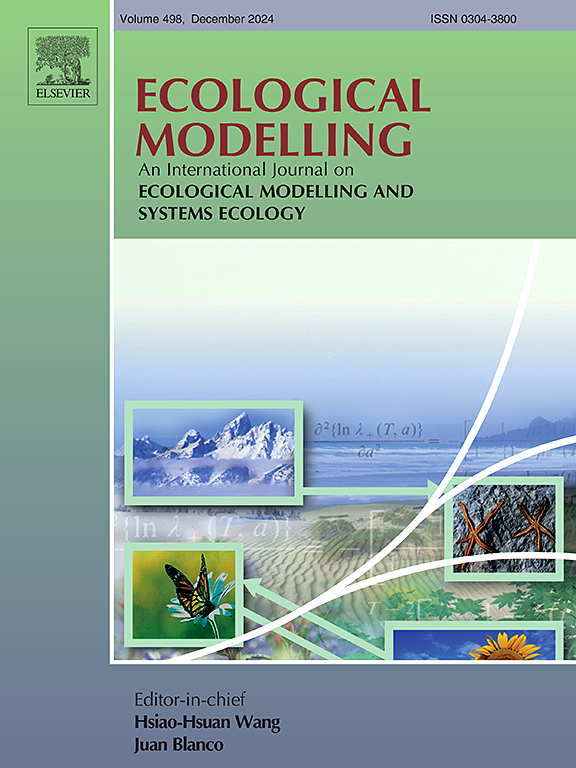Do European models of temperate forest ecological change apply in North America?
IF 3.2
3区 环境科学与生态学
Q2 ECOLOGY
引用次数: 0
Abstract
The transferability of ecological models, especially those based on machine learning approaches, needs to be thoroughly tested to predict beyond the range of the training data. We tested the cross-continental transferability of three machine learning models of forest understorey dynamics trained on data from one temperate region (central-western Europe) to determine how reliable they are for predicting changes in upland forest sites in southern (n = 83) and northern (n = 74) Wisconsin, USA. We tested trajectories of species richness and the proportions of woody species and forest specialists under the influence of global change (i.e. changes in temperature, precipitation, and nitrogen deposition) and local forest management. Among the three tested models, only one (the model predicting species richness) generated useful predictions. Such low success suggests that distinctly different environmental contexts or the absence of key biotic and/or abiotic predictors likely impeded model performance. Although we cannot recommend applying these models to regions beyond temperate Europe, including more predictor variables, tuning features, and performing spatial cross-validation could improve power and transferability in future models.
欧洲温带森林生态变化模式是否适用于北美?
生态模型的可转移性,特别是那些基于机器学习方法的模型,需要进行彻底的测试,以预测超出训练数据范围的结果。我们测试了三种机器学习模型的跨大陆可转移性,这些模型是根据来自一个温带地区(西欧中部)的数据训练的,以确定它们在预测美国威斯康星州南部(n = 83)和北部(n = 74)高地森林地点变化方面的可靠性。在全球变化(即温度、降水和氮沉降变化)和当地森林管理的影响下,我们测试了物种丰富度、木本物种和森林专家比例的变化轨迹。在三个被测试的模型中,只有一个(预测物种丰富度的模型)产生了有用的预测。如此低的成功率表明,明显不同的环境背景或缺乏关键的生物和/或非生物预测因素可能会阻碍模型的性能。虽然我们不建议将这些模型应用于温带欧洲以外的地区,但包括更多的预测变量、调整特征和执行空间交叉验证可以提高未来模型的功率和可移植性。
本文章由计算机程序翻译,如有差异,请以英文原文为准。
求助全文
约1分钟内获得全文
求助全文
来源期刊

Ecological Modelling
环境科学-生态学
CiteScore
5.60
自引率
6.50%
发文量
259
审稿时长
69 days
期刊介绍:
The journal is concerned with the use of mathematical models and systems analysis for the description of ecological processes and for the sustainable management of resources. Human activity and well-being are dependent on and integrated with the functioning of ecosystems and the services they provide. We aim to understand these basic ecosystem functions using mathematical and conceptual modelling, systems analysis, thermodynamics, computer simulations, and ecological theory. This leads to a preference for process-based models embedded in theory with explicit causative agents as opposed to strictly statistical or correlative descriptions. These modelling methods can be applied to a wide spectrum of issues ranging from basic ecology to human ecology to socio-ecological systems. The journal welcomes research articles, short communications, review articles, letters to the editor, book reviews, and other communications. The journal also supports the activities of the [International Society of Ecological Modelling (ISEM)](http://www.isemna.org/).
 求助内容:
求助内容: 应助结果提醒方式:
应助结果提醒方式:


